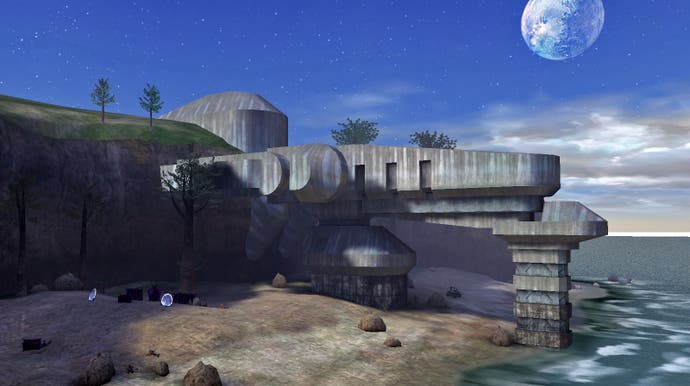How brutalism has shaped games
Set in concrete.
It's easy to understand why brutalism has been such a potent source of architectural inspiration for games. The raw forms - solid, legible and with clear lineation - are the perfect material for level designers to craft their worlds with. Simultaneously, these same structures are able to ignite imaginations and gesture outwards, their dramatic shapes and monumental dimensions shocking and attention-seizing.
Brutalism is a branch of architecture that spans roughly 30 years (1950s-1970s). It was borne out of the devastation of two world wars, when there was a need to rebuild. In this aftermath brutalism became a vital global phenomenon. If you live in a city, you've no doubt passed by a hulking example.
The term derives from a French invention: béton brut, meaning raw concrete. This is the structure's most prominent feature - sheer concrete surface, often left rough, exposed or unfinished. Significant in the emergence of brutalism was the architect Le Corbusier and his Unité d'Habitation. Built from reinforced concrete, the housing unit was an attempt to create what Le Corbusier called "a machine for living" - a place that met our every need. It was a thoroughly modern, progressive and even utopian conception of architecture. Regardless of the visual force of brutalism, it's impossible to divorce it from this socio-historical background.
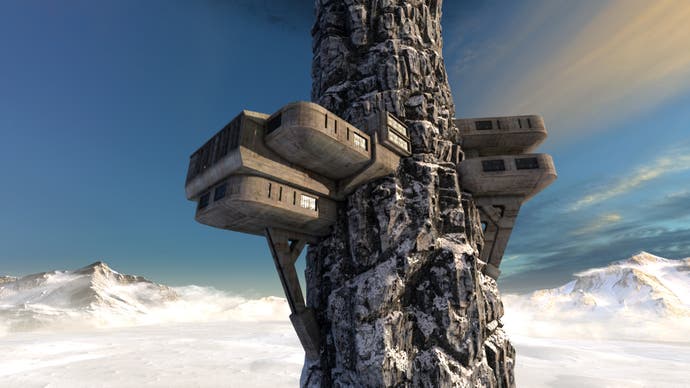
By the time the Nintendo Entertainment System launched in the mid-eighties, brutalism was for all intents and purposes dead. Nevertheless, the ghost image of these structures has remained and been recreated in virtual worlds like a kind of collective screen burn. According to The New Yorker we are "in the midst of a full-blown brutalist revival" while The Guardian claims the architecture is "back in style", with Instagram photography and coffee-table books fascinated by structures ranging from cosmic communist monuments to abandoned bus stops.
Everyone seems to have an opinion on brutalism. Even Donald Trump has waded in on the debate. On the FBI's J. Edgar Hoover Building, he exclaimed: "it's one of those brutalist-type buildings, you know, brutalist architecture. Honestly, I think it's one of the ugliest buildings in the city." To its detractors, brutalist buildings aren't just ugly, they're abominations - monstrous carbuncles that must be demolished.
The idea of concrete as bleak and depressing is a well-worn one. Dishonored's Coldridge Prison uses the architecture as a symbol of corruption and oppression. For many, brutalism is a pejorative to refer to any kind of unearthly urban structure. A striking hulk of towering concrete that commands discipline, Dishonored's prison represents the ice-cold system in opposition to the warmth of humanity. Brutalist architecture has a history of being seen in this alienating light, despite the reality of its progressive and humanist ethic.

Wolfenstein: The New Order is another game which plays off of these totalitarian perceptions. The developers at MachineGames have stated they drew inspiration not just from brutalism, but from the work of Nazi Germany's chief architect Albert Speer. Much of Speer's work was a form of neoclassicism, aping the heights of the Roman Empire (in fact the Romans invented concrete: a composite mixture of gravel and cement). Whilst The New Order's architectural blend follows a trend of fascism co-opting modernism whilst eschewing social progress, its alternate-history is believable in so much as you would expect the Nazis to turn brutalism's most monumental aspects into grandiose, imperial citadels.

Brutalism shares a visual identity with what's known as bunker architecture. Grey and fortress-like, structures were built for what the author of Concretopia, John Grindrod, refers to as a "wearier, warier world". Blood and ruin weighed heavily on those living in the post-war period, and there was a tangible fear that cold conflicts might flare up into hot nuclear war at any given minute. Concrete fortifications, pillboxes and trenches will be familiar territory to anyone whose navigated the austere rooms and tunnels of a nineties first-person shooter. This may be architecture-by-accident, or technological limitation, but games such as Quake and GoldenEye produced levels in a very similar minimalist concrete style. Blocky and angular, these were an early parallel, before textures and polygons allowed for more conscious brutalism.
An early example of purposeful brutalism can be found in Rare's Perfect Dark. The mission Air Base Espionage takes place on an Alaskan mountain, and although the majority of the level plays out inside, the front of the structure has a clear influence. The inward sloping pillars, blocky asymmetry and faintly-stained concrete clearly distinguish the building from the game's other levels, most of which are a mix of glass, stainless steel and neon.
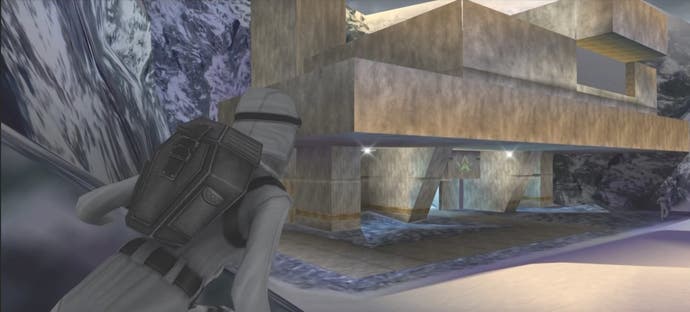
Whilst the same kind of bunkertecture can be seen in Bungie's original Halo, there are also more deliberate flecks of brutalism. Bungie could clearly produce metallic surfaces, as seen on both human and covenant spaceships, but they chose a stripped-back concrete to masterfully represent the ring world's Forerunner architecture. Like so many examples of brutalism, the structures are monolithic - it's difficult to imagine how such dense masses were ever constructed. They also evoke an element of permanence; of ancient beings leaving their mark. The interiors of Halo are just as deliberately minimal as the exteriors, eschewing all unnecessary details. Structures resonate like cosmic cathedrals - cold, haunting and otherworldly. These same sublime effects are achieved within the labyrinthine halls of indie games like Naissance and Fugue in Void, as well as through the coffered ceilings of Fallout 3's Washington, D.C. metro system.
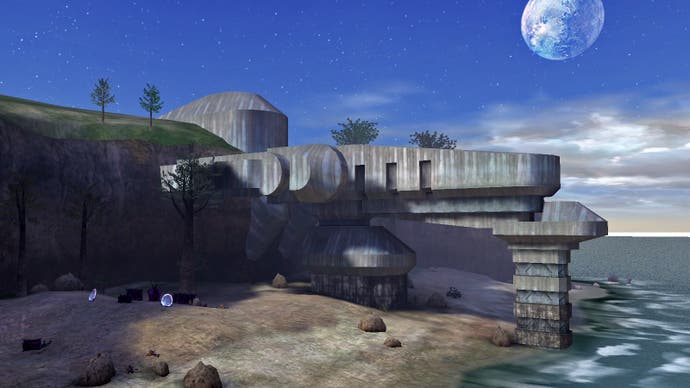
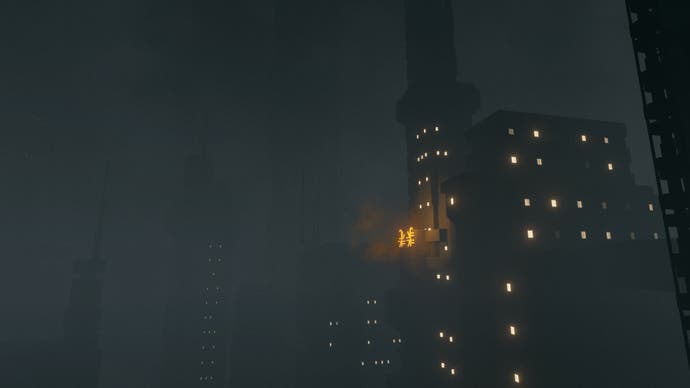

The majority of brutalist buildings were important social infrastructure. Built with huge public investment, they were part a modern, hopeful construction boom, with governmental complexes, libraries, places of culture, educational centres and social housing. These optimistic buildings were also as much a product of the Communist East as they were the social democratic West.
S.T.A.L.K.E.R: Call of Pripyat's eerie post-apocalyptic landscape is pockmarked with strange anomalies, but among the rubble and debris lie more familiar relics. In Pripyat, the Energetik, or Palace of Culture houses a strange cult of fanatics who worship an artifact hidden in the centre of The Zone. The architecture of the Palace, as well as supporting structures like the bus station, reinforce the tone and themes of the series. Brutalism is in many respects a historic failure, with public space and social investment abandoned in favour of private ventures. In S.T.A.L.K.E.R, brutalism is shown as dead and decaying - a fragile architecture of the apocalypse.

Deus Ex: Mankind Divided's Palisade Property Bank shows a tragic end for brutalism. In this world corporations have as much control and authority as any 20th century government. The Palisade Bank represents a shift in the aesthetic of science fiction, from the shimmering transparency and glowing neon of cyberpunk to what Rick Liebling has called Hard Concrete. The architecture of corporations today are ostentatious and deliberately non-threatening, the antithesis of brutalism's stark honesty. In the world of Deus Ex this is reversed, the gold and glitter of Trump Tower has been abandoned, with corporations now ironically co-opting concrete in order to build their new-age monoliths. Their power is no longer hidden or obscured, but impenetrably front and center.

Game environments form part of a revival of interest in brutalism, and concrete may well coalesce into the new sci-fi aesthetic. And whilst Trump may well see the FBI's iconic J. Edgar Hoover Building demolished, Remedy's upcoming game Control already looks to be recreating its strange concrete formations.
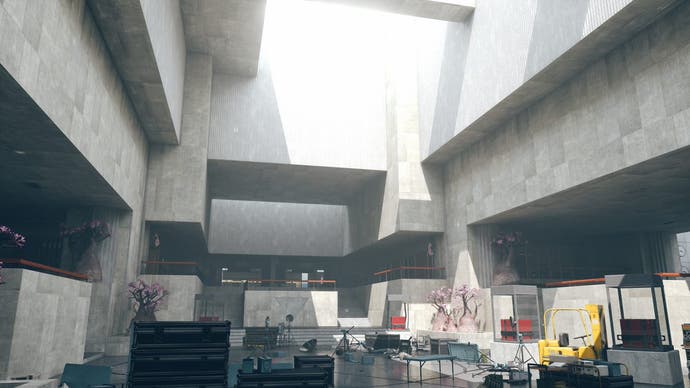
As an architectural project brutalism may be history, but we'll continue to be fascinated by it. Whilst some games paint brutalism in a negative light, others are clearly in awe of the form. Concrete can of course be oppressive and dystopic, but it can also be sublime and just as able to point forwards towards optimistic futures as back to a more brutal past.
